In one of my previous blogs, I focused on black-and-white landscape photography. This time, I will address colour in landscape photos. The appropriate use of colour in photography adds dynamic elements to images to please our eyes. We have to use colour to our advantage to create photographs to be proud of.
Definition of colour
Colours are components of light reflected off an object. Light is radiation that behaves like waves, so colour starts with light. The colours we see are influenced by the characteristics of the light source, not just a property of the subject. Therefore, the colour range that we can see has different characteristics.
Users of Photoshop or Lightroom will be acquainted with the hue, saturation and luminance terminology. Hue is a name we give colours on the colour wheel (red, yellow, green, blue, and so on). Saturation (also known as purity) is the level of greyness present. The less saturated, the greyer the colour appears. Finally, luminance refers to the light and dark properties of colour.
More than colour in landscape photography
Capturing colourful objects is not enough to create beautiful colour images. A picture of colourful flowers is not necessarily a nice colour picture. It’s difficult, I admit. So often, the colour can detract us from an excellent composition. As photographers, we must use it to make visual statements combining colour and content; otherwise, our images are empty.
Seasonal colour in landscapes
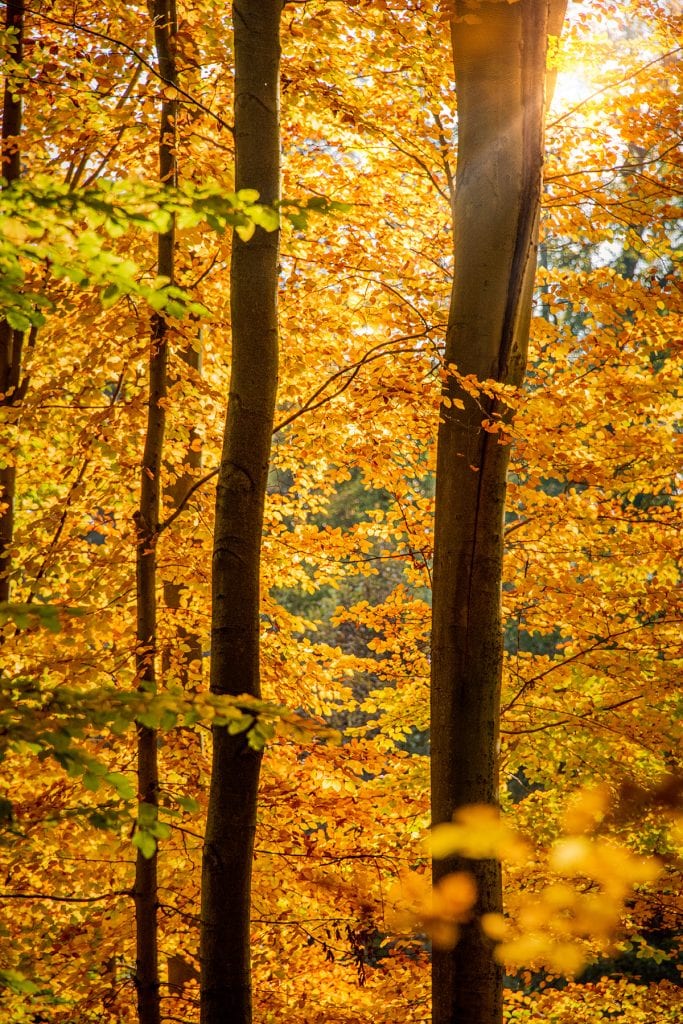
The colours in landscape photographs are very seasonal. Brown, red, and ochre are associated with autumn, and white and grey are associated with winter.
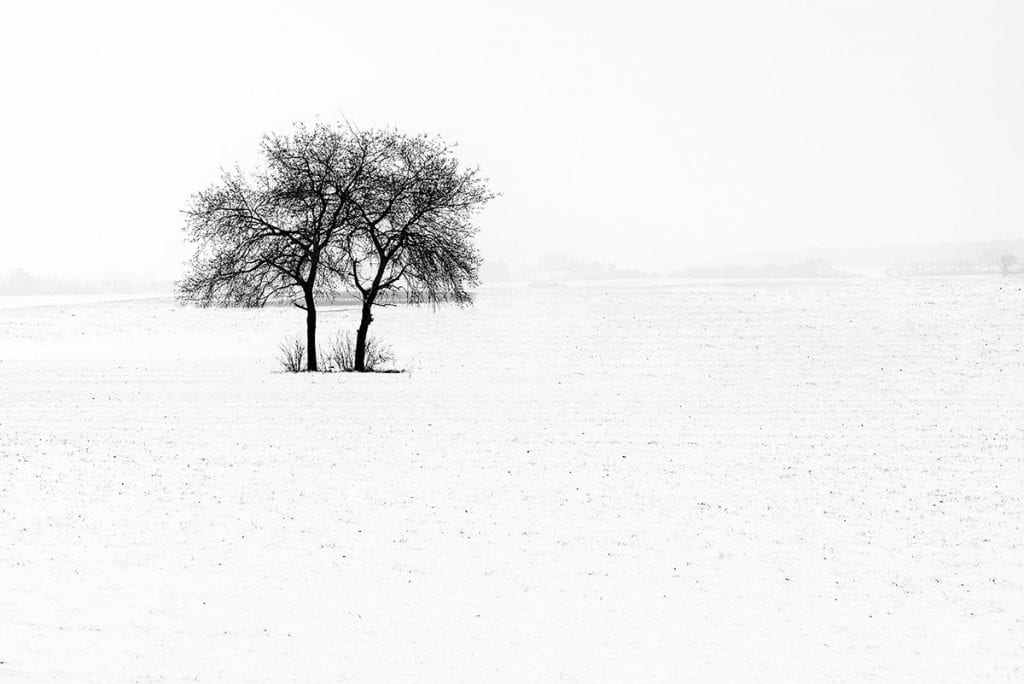
Spring has primary light green as its main colour, slowly changing to deep green with shadows in the summer. All this is completed with various delicate spring or bright summer flowers. The colour package of nature changes throughout the year. Colour evokes a certain mood for the viewer, from lightness to melancholy. Yellow colours feel warmer and are therefore more comfortable than blueish ones. However, that does not always hold: we immediately associate the deep blue of some marine landscapes with warm tropical islands! Our colour experience is, therefore, relative to a specific subject.
In the four-picture panel below, I have shot the same forest scene in four different seasons with typical colours to illustrate the contribution of colour to the seasonal mood of the landscapes.
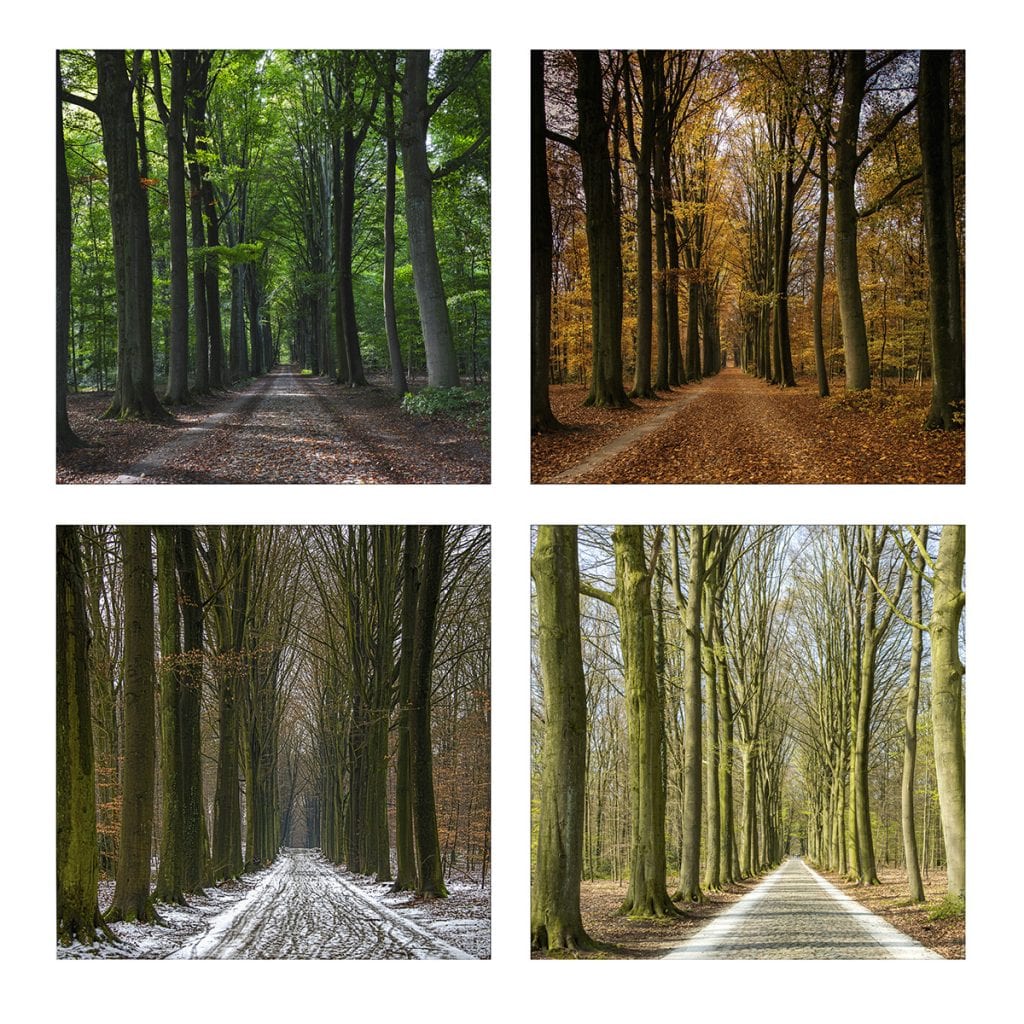
Colour balance in landscape photography
Blue is a counterbalance to many colours. In sunny weather, the landscape is covered by blue, while water absorbs that colour. Because blue, as a cool colour, tends to recede in our eyes (while the red of flowers comes at you), it gives us space and air. Therefore, the dark grey of a cloudy sky can create a certain pressure. You feel you are pushed back in a way.
The intensity of the colours plays a role in the balance an image needs. Contrasting strong colours can cause undesired imbalances, while this contrasts when the colours are in harmony with each other.
Unfortunately, the sky is often rather colourless, just above the horizon. This is especially the case on fairly sunny days with no clear clouds, which does not provide attractive scenery.
Colours and emotions are interlinked. The same colour picture can trigger different emotional reactions. The emotional value of colours explains why a view or a particular light touches us and makes us reach for our camera. The final photo means what it means to us and reminds us of the emotion of that moment.
As in the past, filters can influence colours. Nowadays, post-processing is the way to handle this. For example, red attracts a lot of attention, while cool colours such as blue and green seem to disappear into the background. Colour contrasts can give the photo an extra dimension.
The quality of the colour defines colour photos. This concerns primary versus secondary colours, intrusive versus receding, saturation, and brightness. The primary colours, red, blue, and yellow, are more pronounced and present in the foreground than the secondary ones, such as brown or lilac. This is because the red colour jumps towards you. You need fewer bright colours in a composition to create a balanced image.
In the photo below, the red mailbox draws attention
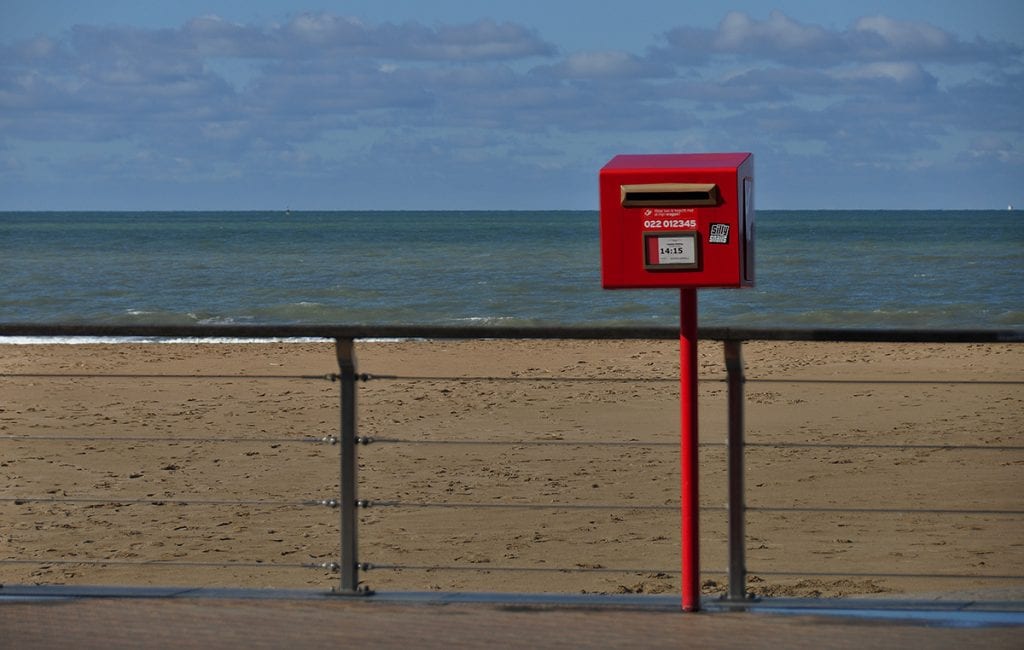
We can use blue in larger quantities because it seems to give way and does not require much attention. The warmer the colour, the more it comes to you. Cooler colours give way. The red-green or blue-yellow contrasts are striking and often punch a colour photo.
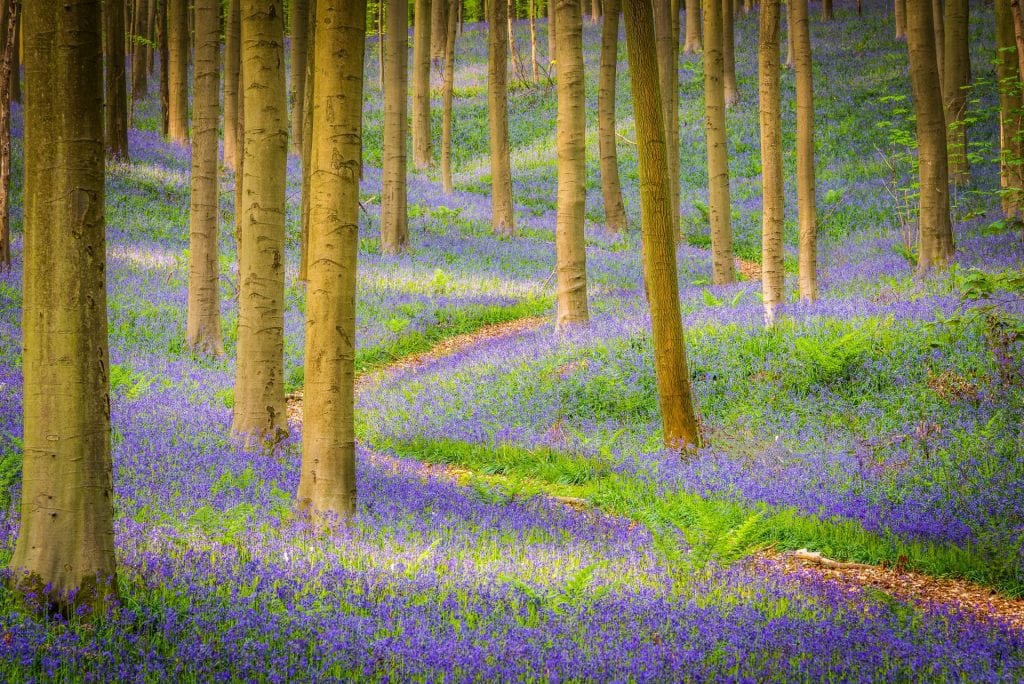
Bluebells, Guy, 2014
Colour and perspective
You can use those intrusive and receding characteristics of colours to support perspective. Because of its blueness, the horizon seems even further away, while the red of poppies, for example, gives the feeling that you are in the middle of the field.
In general, too many different colours in a photo create a restless effect. Our eyes cannot find a focal point, especially when there are relatively many intrusive and receding elements. However, many secondary colours, such as in a flower meadow, are not disturbing.
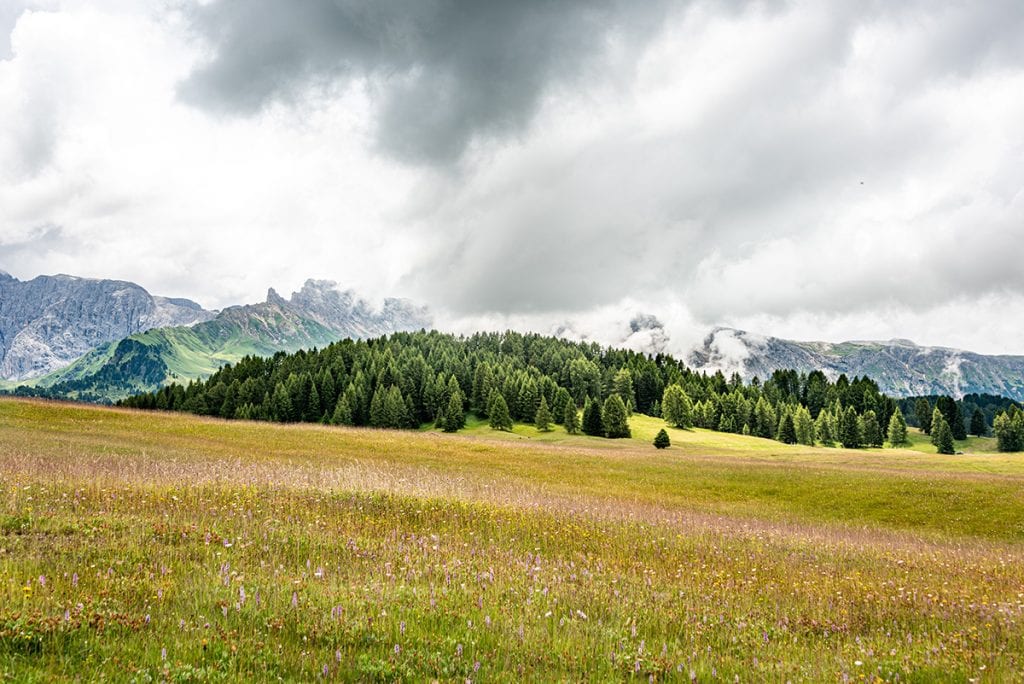
In a landscape photo, layers may appear in your image due to contrast differences between elements such as air, water and land. Dividing the surface based on those colour areas in conjunction with the rule of thirds produces better results.
In the picture below, we see only three colours without any focus point, yet by applying the rule of thirds, this picture becomes attractive. The dance of the light enforces the 3-D effect.
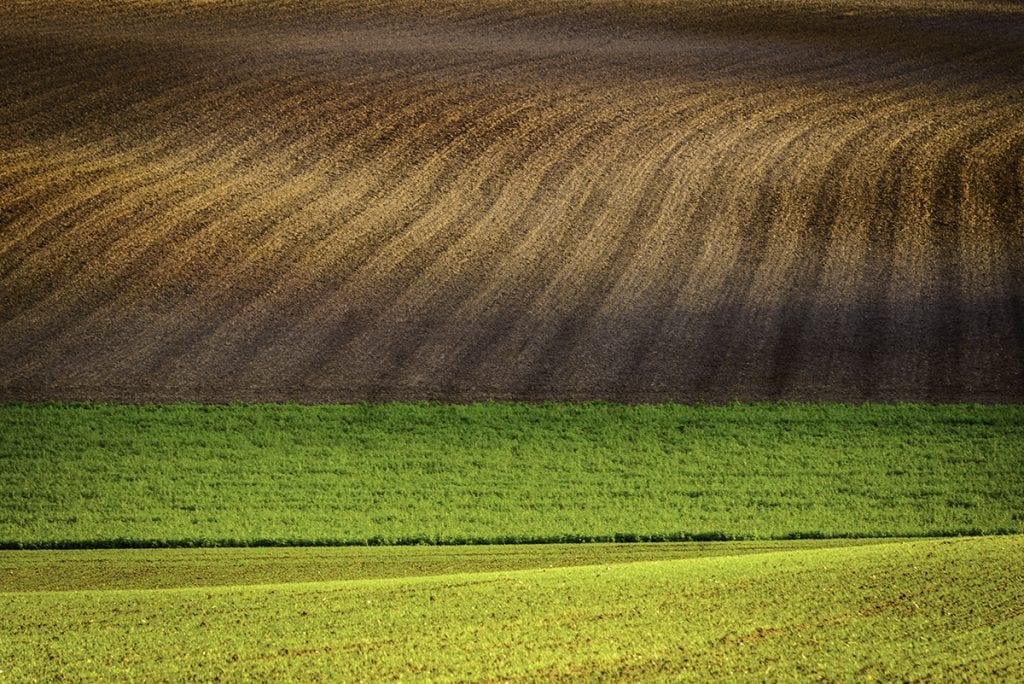
Single colour photos
Perhaps the most remarkable effect is shown when almost the entire photo consists of only one major colour. A monochrome view can occur under certain light conditions, even though the subject has different colours. In the bleu picture of the beach below, you notice that even the sand in the foreground has turned blue.
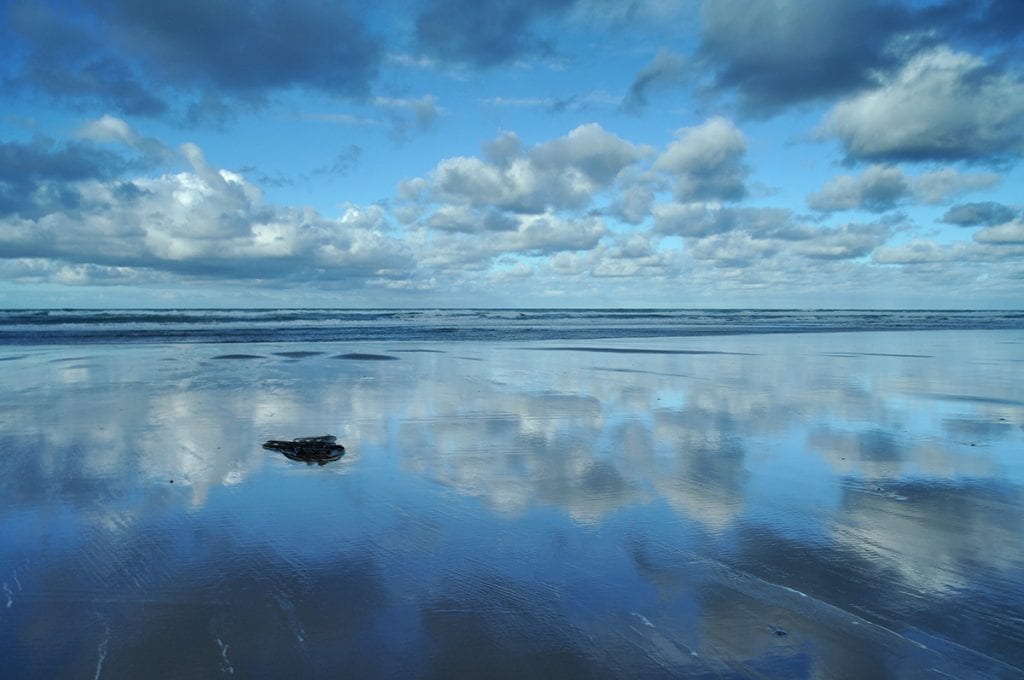
In the following picture, the main colour is green in different shades. The evening light accentuates the flow of the slope. Altogether, this brings a tranquil but interesting picture
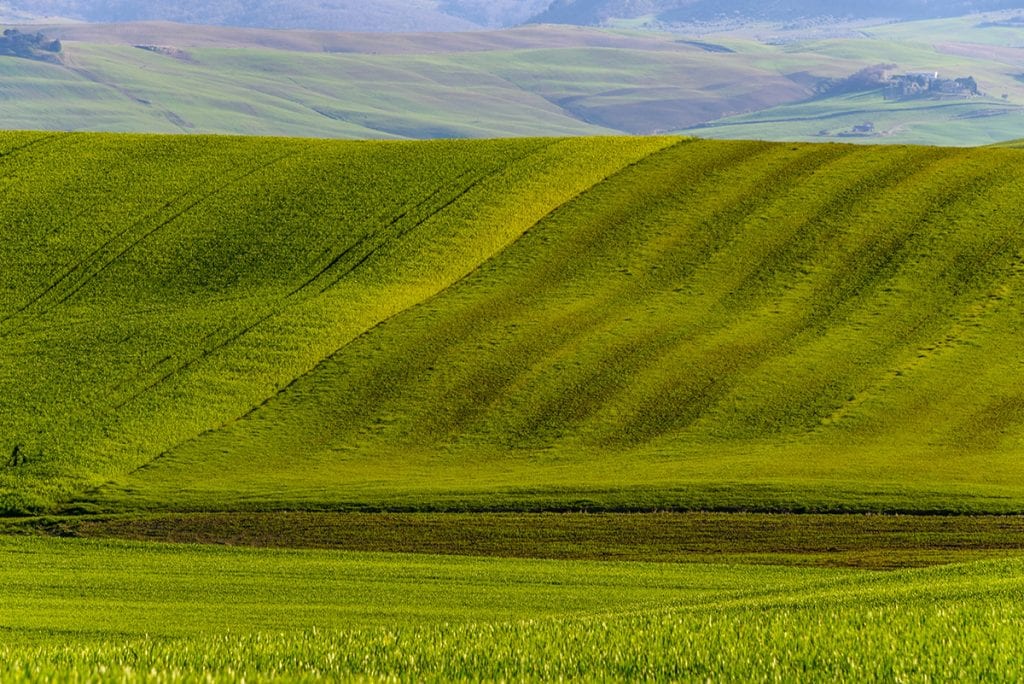
I am very interested in hearing your comments or experiences. Leave them here below.
2 Comments
the photograph of the bluebells looks amazing, has an almost painted feel to it. I am lucky enough to live near a number of bluebell woods and they have probably the best they have been for years.
Thanks, Paul, Bluebells are awesome indeed